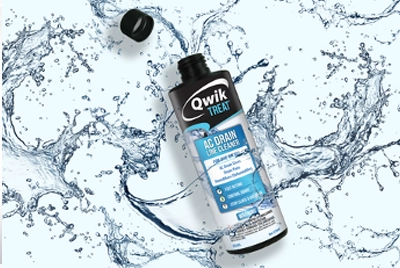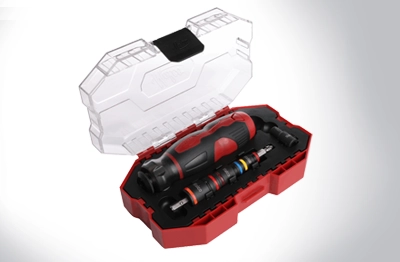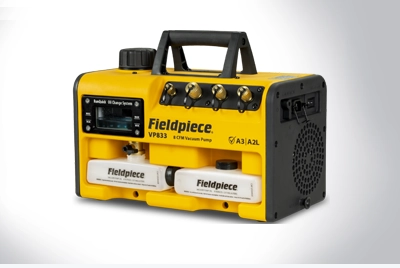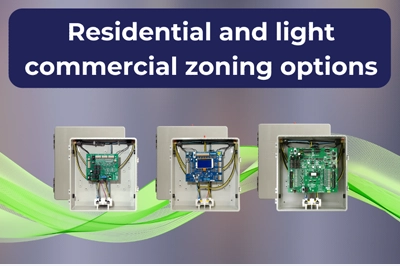What trends do contractors need to be aware of when mapping out growth strategies for the upcoming years?
For the second installment of this three-part series, we asked industry association executives for their perspectives regarding trends and directions in HVACR. Common themes that emerged include a path of continuous growth; more energy-e∞cient buildings and equipment; and the ongoing need for highly trained and certified technicians.
HVACR Business thanks the following contributors. We trust you'll find their input valuable as you formulate your management strategies for the years to come:
- Lee Burgett, P.E., president, American Society of Heating, Refrigerating and Air-Conditioning Engineers (ASHRAE)
- William G. "Woody" Sutton, president, Air-Conditioning & Refrigeration Institute (ARI)
- Paul T. Stalknecht, chief executive, Air Conditioning Contractors of America (ACCA)
- W. Randall "Randy" Rawson, president, American Boiler Manufacturers Association (ABMA)
- Rex P. Boynton, president, North American Technician Excellence (NATE)
Where do you see the industry heading over the next five, 10, 20 years?
Burgett: Over the next five years, we'll see continued dominance of vapor compression refrigeration systems, but with increasing emphasis on sustainability.
Over the next 10 years, the primary focus will be on energy consumption in both new construction and existing buildings. Existing building stock represents a huge percentage of total power consumption and has not received the attention it deserves. At a minimum, existing buildings must perform as they were designed. Further opportunities for improvement will be economically justified as energy costs continue to increase.
In 20 years, net-zero energy buildings (buildings which, on an annual basis, use no more energy than is provided by the building's on-site renewable energy sources) will be commonplace.
In looking ahead to the next 25 years, concerns will continue to grow regarding energy efficiency, the need for better indoor air quality (IAQ) and improved productivity, and the move toward more energy-effective and environmentally friendly refrigerants. I believe our industry will become more important and prominent in the eyes of the public as they call for more energy-efficient systems and products; as they demand HVAC systems that allow control over individual spaces based on individual preferences; and as more recognition is gained for IAQ as a tool to improve productivity. There will be a greater demand for "engineering for the world we live in."
Sutton: The HVACR industry is on the path of continued growth. Our industry produces in excess of $15 billion of product, employs 130,000 people, and supports 800,000 dealers and contractors. Penetration of our products in homes continues to rise, with almost nine homes out of 10 relying on our products for their indoor comfort. The U.S. population is expected to increase by about 45 million between now and 2050 and this industry is well positioned to help improve the quality of life at home and abroad through the production of high-quality equipment from indoor comfort systems to commercial refrigeration.
Although an era of high energy costs is before us, the HVACR industry's ability to deliver products that provide a higher level of comfort and cooling, while decreasing energy consumption, will be a key factor in its continued future success. Overall, the energy efficiency of our products has increased 70% since 1992.
Over the next two decades, the HVACR industry will continue to grow and innovate as investments made in researching and developing more energy-efficient technologies come to fruition. However, the industry can only continue to make those investments if it can operate in a stable regulatory environment. U.S. manufacturers need regulatory predictability to better compete with their foreign competitors and commit additional resources toward innovation.
Stalknecht: Obviously the steady march of technology will continue to change our industry. Air conditioning systems are moving from "a box attached to a house" to integrated systems that will literally "talk" to occupants. Advanced comfort systems will change the way people view their indoor comfort, and they will change the way they view professional contractors. The most successful contractors are moving beyond the traditional "install-a-box-and-fix-it-when-it-breaks" model to one of integrated comfort consulting.
This brings with it an increased need for contractors to design, install, and commission residential systems. Contractors need to design it right (using the proper procedures found in Manuals J, D, S, and T), install it right (to OEM specifications, using good HVAC practices), and test it (to ensure quality installation according to ACCA's new quality installation specification).
Discuss some of the key issues/major challenges the industry will face.
Burgett: The industry will continue to face "social impact issues" of energy conservation, IAQ, productivity, and the broader issue of sustainability. Our industry must strive to produce products and systems that will minimize our dependence on existing energy supplies, while also realizing that we must have an equal focus on the indoor environment and its impact on productivity. To accomplish this, we must:
- Optimize and make consistent ASHRAE Standards 90.1 on energy conservation, 62.1 on indoor air quality, and 55 on thermal comfort
- Implement improvements that yield a significant increase in productivity
- Develop tools to allow designers to model a building in virtual reality in one week.
Sutton: Environmental Regulation — The HVACR industry's products and manufacturing processes are under scrutiny by domestic and foreign regulators focused on reducing greenhouse gas emissions. However, we believe ARI member companies' good environmental record will help us prevent these products from being overregulated.
At ARI, it is a top priority to make sure, globally and domestically, that policymakers and regulators are aware of the industry's environmental stewardship to help prevent the morass of regulations that would ultimately thwart the industry's progress in manufacturing cleaner and efficient products.
Shortage of Qualified Labor — Qualified, competent technicians and installers are important for everyone, because when a job is done right and customers receive value for their money, everyone wins: the customer, the manufacturer, the distributor, and the contractor.
ARI supports the certification of technicians by the North American Technician Excellence (NATE) program, and the accreditation of education programs by the Partnership for Air-Conditioning, Heating and Refrigeration Accreditation (PAHRA) program. ARI has upgraded and reformatted the Industry Competency Exam (ICE) and the ARI Curriculum Guide, and has produced a guide for schools wishing to develop HVACR technician training programs.
Intellectual Property Rights (IPR) — The industry has been increasingly battling over IPR violations, especially overseas. However, this year at the AHR Expo in Chicago, we began to note that IPR violations are surfacing domestically as well. At the Expo, we identified several overseas distributors who were displaying items copied from ARI member product lines. ARI is taking this issue very seriously and working to address the problem domestically and abroad.
Cool and Efficient Buildings Act — In our effort to improve life and the environment, ARI is advocating for the adoption of the "Cool and Efficient Buildings Act." This bill, currently pending in the U.S. House of Representatives, would accelerate the depreciation period from 39 years to 20 years for new commercial HVACR equipment. The bill would help save energy by phasing out older, less efficient equipment, and reducing operating costs for building owners. And, it would help the environment by encouraging building owners to replace units that still use CFC-based refrigerants.
Refrigerants — As the R-410a changeover deadline of 2010 gets closer, more manufacturers are beginning to change their processes. We expect the percentage to grow this year, and every year until the deadline. Each manufacturer, however, makes its own decision on when to begin using a different refrigerant, but this is definitely an important — and potentially expensive — issue for the industry.
HVACR Research — The need for a strong industry research program, including public/private partnerships, is clear, immediate, and necessary. Energy supplies are down while demand is up, global climate change looms, safeguarding against food-borne bacteria requires more care, and the quality of our indoor environment requires continuous improvement.
Stalknecht: Contractors need to differentiate their brands and demonstrate higher proficiency, such as with the ACCA Quality Contractor/Quality Installation model, as well as NATE certification. This industry has a low barrier to entry and that is unlikely to change in the foreseeable future. To avoid any further commoditization and ensure profitable operations, contractors are going to have to take it on themselves to show that they perform at a higher level than their competition and are worth a higher price.
Refrigerant evolution is also going to have a deep impact on contracting. R-22 will be gone in new equipment in 2010, and new refrigerants are going to be continually phased in and out, each presenting new challenges and opportunities in the field.
Contractors also need to adapt to a changing marketplace. Consumers have more disposable income and place a higher priority on health, particularly as the population matures. We need to keep an eye on larger societal trends that may present opportunities for our industry. For example, multigenerational households have exploded over the last few years and will continue to grow. You can see how this could present new opportunities related to zoning due to differences in temperature preference between generations.
As the years go by, what will be different regarding equipment?
Burgett: We will see more equipment that is designed to limit the footprint we leave behind on the earth. This could include moving one or more of the non-traditional technologies that has comparable performance and cost to traditional vapor compression systems to market readiness.
Sutton: Energy efficiency improvements have been a key factor in equipment advancements in our industry. In addition to developing more energy-efficient products, manufacturers are focused on providing consumers with total comfort solutions. This means developing more products that address IAQ, reduce noise, provide improved diagnostics and enhanced durability, and feature thermostatic and zone controls.
Stalknecht: There will definitely be changes in the consumer interface. More intuitive control systems, with integrated system controls and diagnostics, will give consumers more choices. Nowadays, consumers have come to expect certain things from technology in all facets of their lives. They expect it to be as easy to possible to understand, but they also expect to have greater flexibility and control — two goals that can sometimes be difficult to reconcile.
A greater focus on quality installation, extended care, and system cleanliness will lead to cleaner, healthier indoor environments. Concern over energy costs and foreign energy dependence will continue to drive higher efficiency systems and alternative heating and cooling technologies.
What manufacturing/technological advancements will we see? How will these changes affect the way contractors approach their businesses?
Burgett: As energy costs continue to rise, we will be called on to design and maintain systems that result in net-zero energy use. This will require that the industry be prepared to provide more comprehensive education to engineers and contractors on how to design such systems and buildings.
Sutton: Installing the new, higher efficiency residential equipment requires more comprehensive system knowledge for contractors than was previously required. Proper sizing and matching of these new systems are vital to a proper installation that ensures total system performance.
Comprehensive knowledge of all the sophisticated products that can be packaged into "total comfort systems" requires education and training beyond what many installers currently possess. For this reason, manufacturers are more involved than ever with our friends at ACCA, the Plumbing, Heating, Cooling Contractors Association (PHCC), NATE, and the many trade and technical schools with which we have relationships, to ensure they have the knowledge necessary to competently install the newer systems.
Stalknecht: Generally speaking, we will continue to see technological advancements tested and used in commercial buildings first, then later filtered into the residential marketplace. Higher efficiency systems will continue to be adopted at a faster rate. Usage of integrated system controls and diagnostic tools will continue to grow. In commercial buildings, we expect to see more adoption of systems that optimize comfort for varied occupants in the same office space.
We expect to see smart systems that actually sense activity and adjust accordingly, as opposed to simply maintaining temperature and humidity, in both the commercial and residential arenas. As systems learn to talk to one another and become more integrated, perhaps the "smart home" will actually begin to materialize.
In manufacturing, increasing foreign competition (particularly from China, Korea, and Japan) will have a major impact on contractors as well as manufacturers.
Successful contractors of the future will need to rise above the increasing commoditization of this industry. If all you are selling is a box, you are a commodity. Community-based businesses cannot survive in a commodity marketplace — at least, not very profitably. Successful contractors will differentiate themselves from their competitors with a greater emphasis on technical proficiency, customer service, and marketplace adaptation.
Technical proficiency and quality installation is vital, but it is not in and of itself a way for a contracting business to truly succeed. Simply knowing how to provide quality technical services is almost impossible to use as the basis for differentiation for the simple fact that consumers don't know if a quality installation was performed. ACCA's coming Quality Contractor/Quality Installation accreditation program will go a long way toward providing that peace-of-mind to consumers that the work done has met an exemplary standard.
However, successful contractors can't rely on technical expertise alone. They will have to move far beyond the toolbox to become masters of the briefcase. Providing exemplary customer service, developing internal systems to manage dispatching and ensure satisfaction, using technology to segment customers and better manage important data, developing new services and products based on their local market intelligence — these are the avenues that will truly allow contractors to rise beyond their competition.





